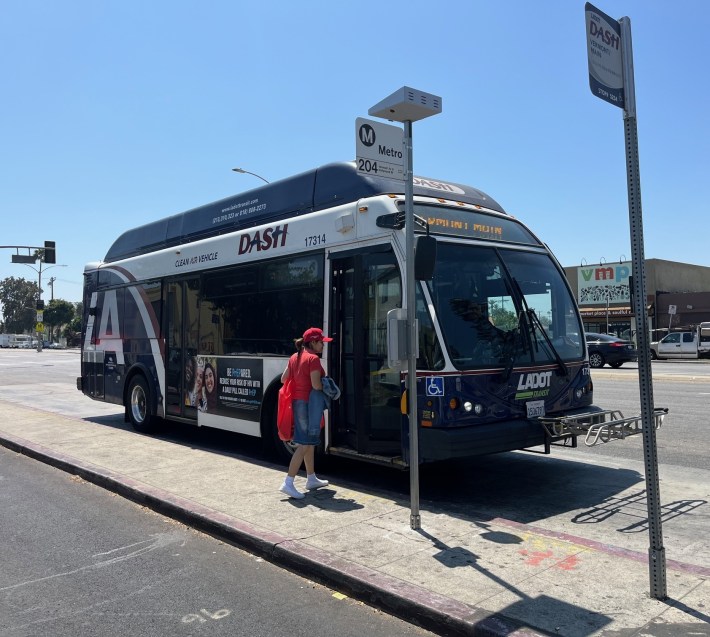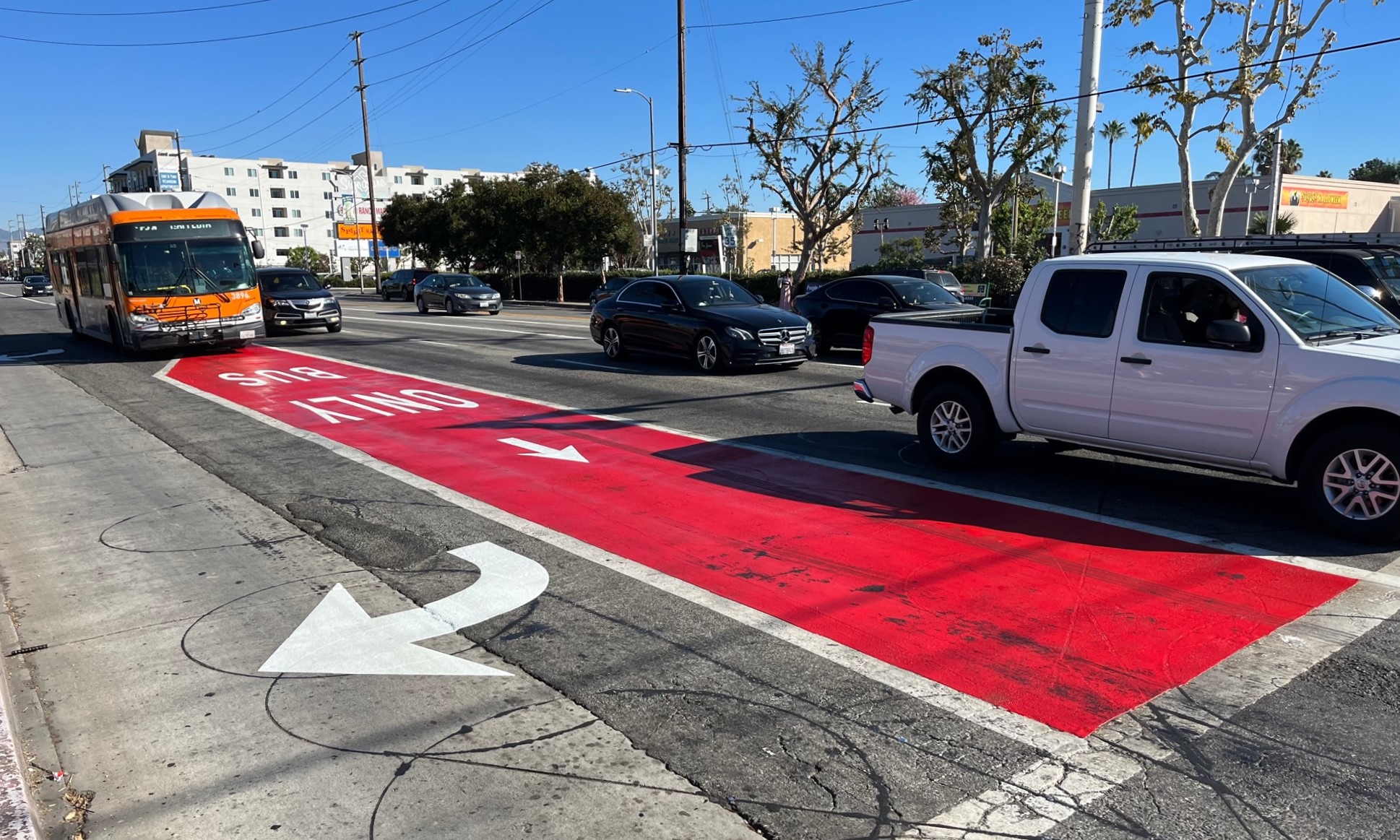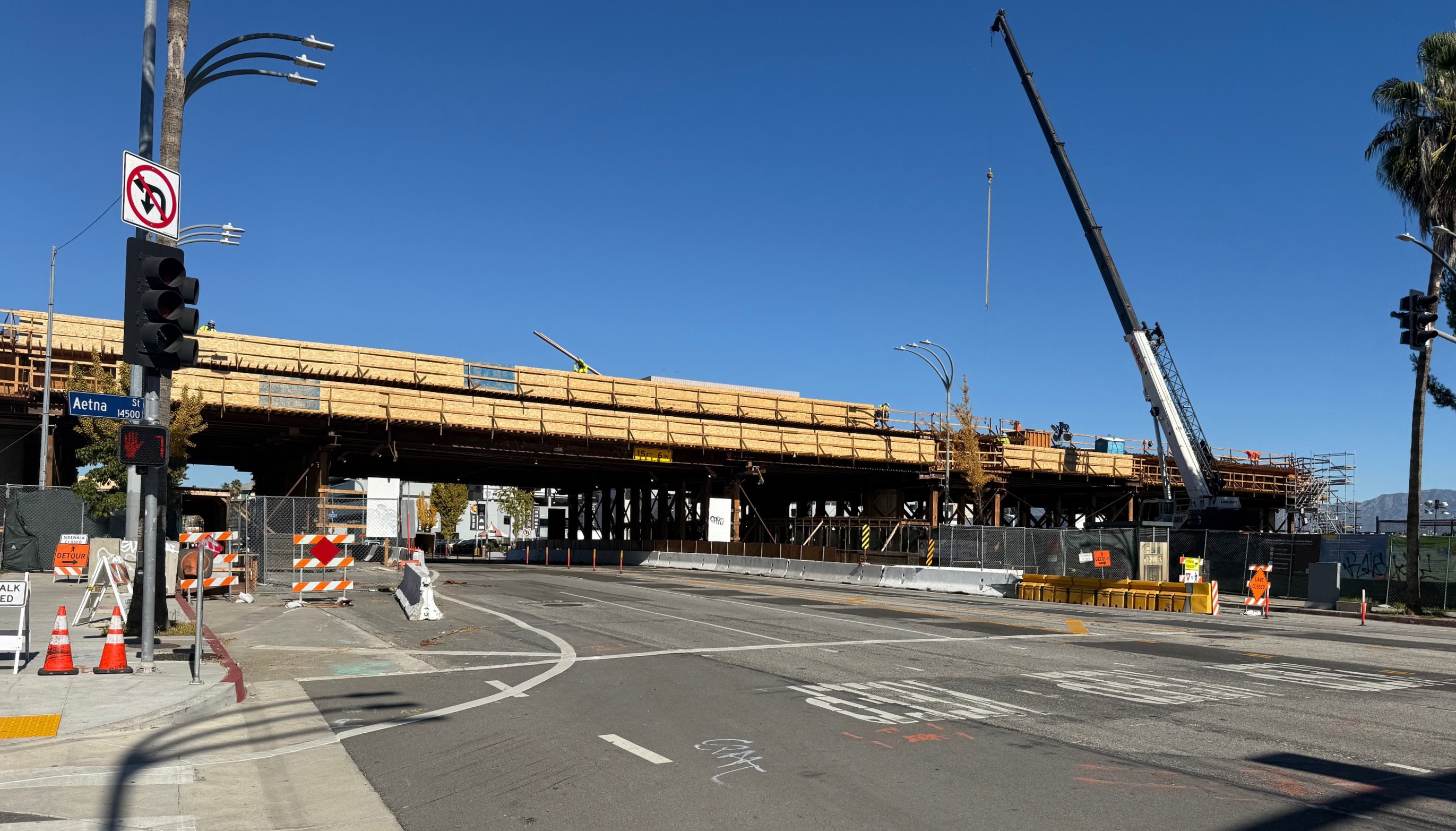Nearly eleven months ago, L.A. City voters approved Measure HLA, a mandate for the city to gradually implement bus, walk, and bike facilities already approved in the city's Mobility Plan 2035. Measure HLA became law in April 2024.
City departments effectively put Measure HLA on hold, essentially ceasing to repave streets slated for bus, bike and walk improvements. According to the city Transportation Department (LADOT), three-fourths of a year into Measure HLA, only three streets (totaling less than three miles) triggered HLA upgrades: Hollywood Boulevard (announced before HLA), Manchester Boulevard, and Reseda Boulevard.
The city is now slowly coming up with its HLA/MP2035 plans, which include an implementation ordinance and a work plan.
Today, the City Planning Department (DCP) released a draft document that will be part of the implementation ordinance: Standard Elements. DCP is taking comments on its draft HLA Standard Elements Table.
Under HLA, repaving and other street projects trigger implementation of the city Mobility Plan 2035. MP2035 approved several "networks" where improvements go [see maps], including:
- Transit Enhanced Network (TEN): streets where the city will improve the "performance and reliability of buses" by installing bus-only lanes. TEN streets are ranked into three tiers: tier 1 (moderate), tier 2 (moderate-plus), tier 3 (comprehensive).
- Pedestrian Enhanced District (PED): places where the city prioritizes providing "a safe and comfortable walking environment."
- Three street networks supporting bicycling: the Bicycle Enhanced Network (BEN), the Bicycle Lane Network (BLN), and the Neighborhood Enhanced Network (NEN). Bikeways too are tiered, with tier 1 specified as protected bike lanes, and tiers 2 and 3 as unprotected bike lanes. The Neighborhood Network (NEN) is generally quieter streets safe for bicycling and walking (known by various terms: neighborhood greenways, bicycle boulevards, bike-friendly streets, etc.)
In some places the Mobility Plan is very clear. A tier 3 transit street definitely gets bus lanes. A tier 1 bike street definitely gets protected bike lanes. (Confusingly the city's tier orders are reversed: 3 is the best bus tier while 1 is the best bike tier.)
In other places the Mobility Plan is not very clear. A pedestrian district probably gets crosswalks and widened sidewalks, but not always. A tier 1 transit street probably gets bus lanes, but perhaps not everywhere or at all hours.
Today's DCP document proposes minimum standards for each tier of each MP2035 network. For each tier of each network, DCP specifies mandatory minimum features, plus optional add-on features.
There aren't a lot of surprises in the draft document, mostly because there isn't that much gray area in the Plan.
There are a few network streets where the proposed minimum improvement is "none." For tier 3 (lowest tier) transit enhanced streets and for Neighborhood Network streets, DCP proposes no mandatory improvements, only optional features.
For the Transit Enhanced Network, the document includes a somewhat-difficult-to-decipher exception allowing the city to omit bus lanes in some situations:
The purpose of the TEN is to reinforce LA Metro’s or other transit operators’ service patterns. The City may, in some instances, forgo the implementation of a bus lane on a TEN street where the bus lane would not support a transit operator’s planned or existing service pattern.
There is a potential scenario where the city should omit an approved bus lane on a street segment where there is no bus service whatsoever. Perhaps that's what this is trying to get at, but in theory under this vague wording the city could perhaps justify omitting bus lanes today (say on Vermont Avenue) based on unfunded decades-off plans (a future Vermont subway that could reduce future surface bus service). Could the city approach Metro to reduce and/or relocate bus service (or even just announce future plans for this) to avoid installing bus lanes today? That sounds far-fetched, but Metro and LADOT did recently omit installing approved bike lanes based on an unapproved future street reconfiguration "plan". If some loophole is needed, the document should be clear about what limited situations would trigger bus lane omissions.
One place where the DCP document provides much needed clarification is Pedestrian Enhanced Districts. Bus and bike facilities are largely binary; either a street has a bus lane or it doesn't. Walkability is more of a spectrum.
The draft document includes the following minimum standard elements for designated pedestrian enhanced districts:
- Address severe impediments on sidewalk or crosswalk
- Add missing access ramps
- For actuated crosswalks, ensure push buttons are physically accessibleand/or place the crosswalk ped phase on recall (WALK comes up automatically)
- Ensure transit stops are accessible
- Update pedestrian signal phase to current timing standard
Most of these elements (remove impediments, add curb ramps, make bus stops accessible) were and are already required under ADA law, hence are independent of MP2035 and HLA. Unfortunately, the city routinely fails to comply with ADA, so it's probably a good thing for DCP to reiterate those existing legal requirements again here.

Readers - look over the 6-page draft HLA Standard Elements Table. What do you think? Do they look about right to you? Anything optional you think might be required? Or vice versa? Respond in the comments below, and/or email comments to DCP at planning.mobility@lacity.org.
DCP will host a virtual information session on its proposed HLA Standard Elements Table on Thursday, February 13, from 6-7 p.m. Register online.







